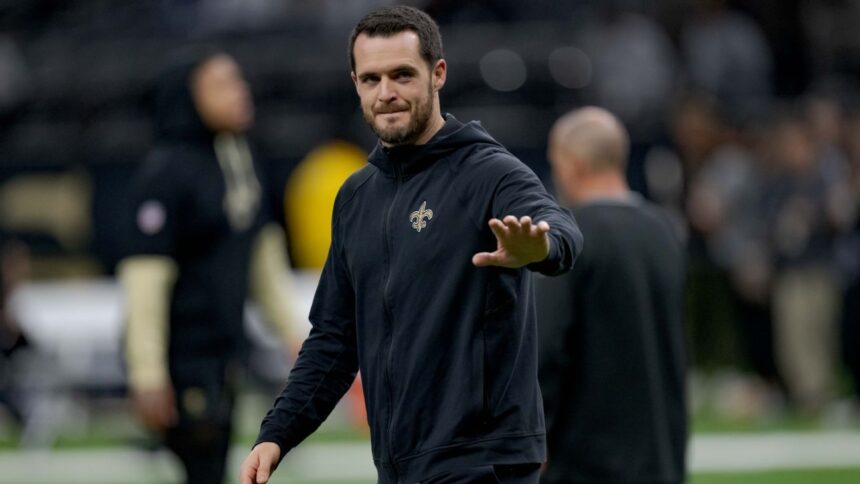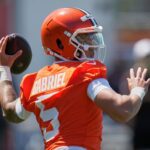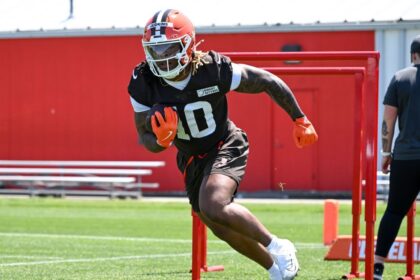The New Orleans Saints received the clarity they were hoping for with Derek Carr’s retirement announcement on Saturday, but this leaves an immediate void at the quarterback position.
Medical examinations determined that 34-year-old Carr suffered a labrum tear and significant degenerative changes in his rotator cuff, endangering his participation in 2025. This is the conclusion that New Orleans has been seeking since April 11, when Carr’s injury became known.
What’s next for the Saints?
The team selected Tyler Shough in the second round of the draft and has second-year quarterback Spencer Rattler and third-year quarterback Jake Haener on the roster. However, New Orleans went 0-7 last season in games Carr didn’t start. Will the Saints seek more help? Or will they bet on what they have?
NFL Nation reporter Katherine Terrell addresses the biggest questions about the ripple effect of Carr’s retirement.
What does this moment mean for the Saints?
The Saints were already preparing for the possibility of playing without Carr, now it’s a certainty. Carr’s retirement became official during the team’s rookie minicamp, which is the team’s first extended look at Shough. Now they will be able to implement their offense thinking about one of their young quarterbacks and eliminate any controversy over the decision of Carr at the beginning of the offseason.
This could have been a distraction if things had dragged on into training camp, but now it’s essentially a clean slate for the coaching staff and the young quarterbacks. Shough, Rattler, and Haener will now split quarterback reps when organized team activities (OTAs) begin later this month. If the Saints decide Shough is the starter this season, they could make a decision early and without the potential shadow of Carr over him.
This also facilitates their plans for 2026. Since Carr chose to retire rather than go on the injured list, they won’t have to decide his future when the 2026 offseason begins. That clears one task off the 2026 checklist, which could be extensive with several veteran players on the roster.
– Terrell

How will the Saints proceed at the quarterback position? Could they bring in another QB?
Coach Kellen Moore didn’t seem committed to Carr as the starter when he had his first press conference as the Saints’ coach in February. While Moore publicly backed Carr during the following months, it always seemed likely that he would want to bring in his own guy, and that decision was sealed when they selected Shough in the second round.
The Saints staff can now mold the position as they want. For now, it’s a group that has three young quarterbacks; they could opt to bring in a veteran to help advise, or they could stick with youth at the position and maintain the status quo. The Saints also brought in Hunter Dekkers as a tryout player for the rookie minicamp, another young quarterback who could try to compete for a practice squad spot if the Saints like what they see.
– Terrell
What are the contractual/salary cap implications of the move?
Carr was due to earn $40 million this season: $30 million base salary and $10 million roster bonus. The Saints restructured his contract for salary cap purposes, which reduced his base salary to the league minimum and converted the rest into a $28.75 million signing bonus, which would be paid weekly during the season. According to his contract, that signing bonus was contingent on “receiving medical clearance to practice and play.” The contract also had contingencies to void the money if he retired from the NFL. According to the retirement agreement, Carr will forfeit the $30 million base salary but keep the $10 million signing bonus. If he doesn’t file the retirement papers by June 1, then the Saints will face the majority of the salary cap implications in 2026.
– Terrell
What is the probability of Carr’s retirement being permanent?
The people I spoke with today would be very surprised if he tried to come back. What became clear in recent months is that Carr’s status as a bona fide QB1 was in doubt. Is he, as of now, one of the league’s 32 best quarterbacks? Most surely. But there was no clear place for him this season, outside of the Saints, and recovering from a serious shoulder injury for a quarterback who turned 34 in March is a daunting task. He will have earned more than $200 million in his career by accounting for his 2025 payment on his way out of New Orleans. It simply seems that a comeback would be an uphill battle, although a player’s potential desire to attempt a comeback if fully healed cannot be ruled out.
– Fowler
If he doesn’t return to the NFL, what is Carr’s legacy?
Carr’s career was underrated in some respects. He played for six different head coaches (two interim) and five different play callers during his nine years with the Las Vegas Raiders, plus a new coordinator in each of his seasons with the Saints. To thrive despite that turnover, going to four Pro Bowls, was an impressive feat. He was also durable before his final year in New Orleans, playing 15 or more games in each of his first 10 seasons in the NFL. At his best, he was on the doorstep of the top 10 at his position. But he was largely viewed as a good player who couldn’t carry a team to the top and lead it to glory. Carr lost his only playoff appearance, an AFC wild-card game with the Raiders in 2022.
– Fowler









